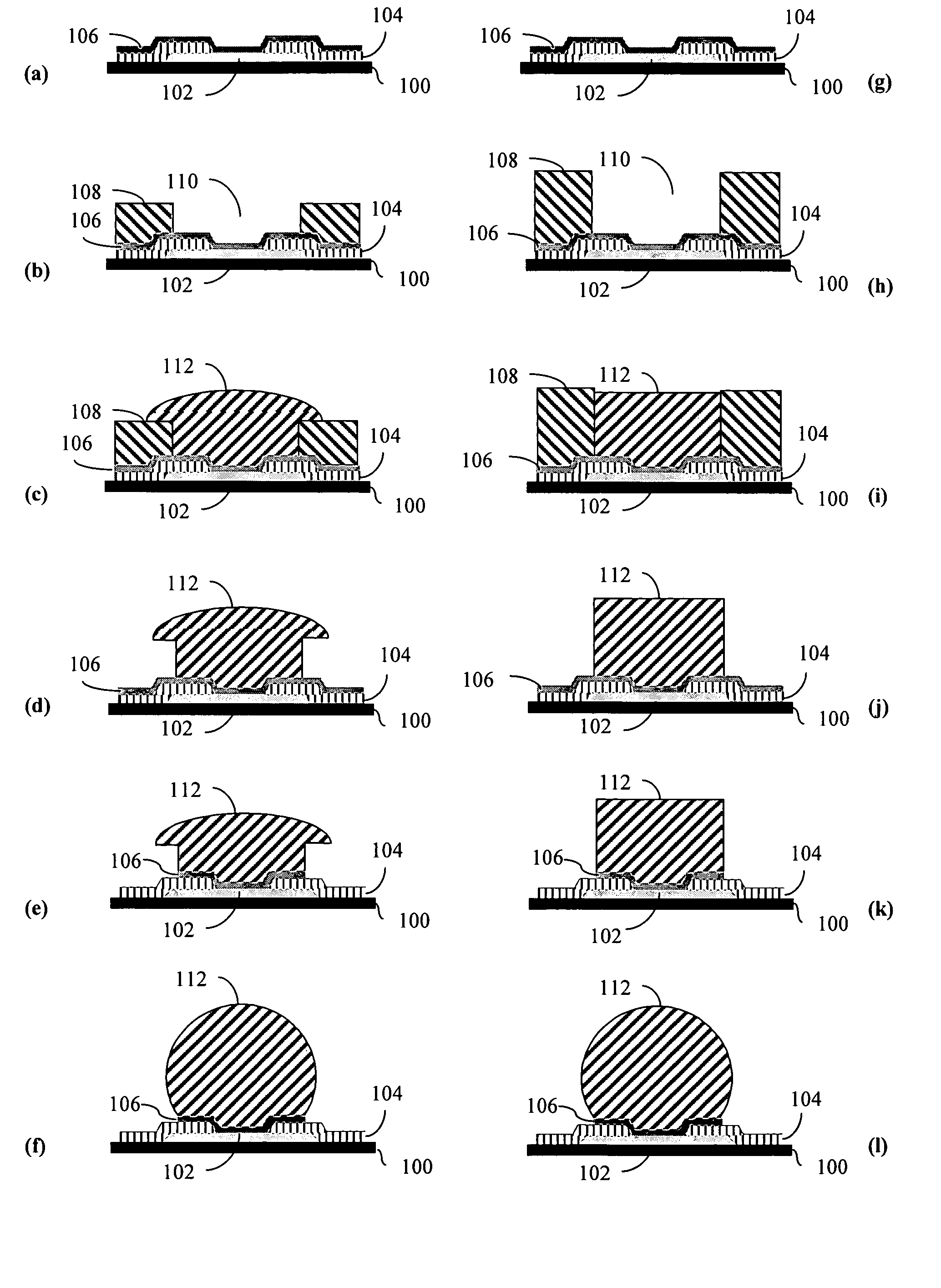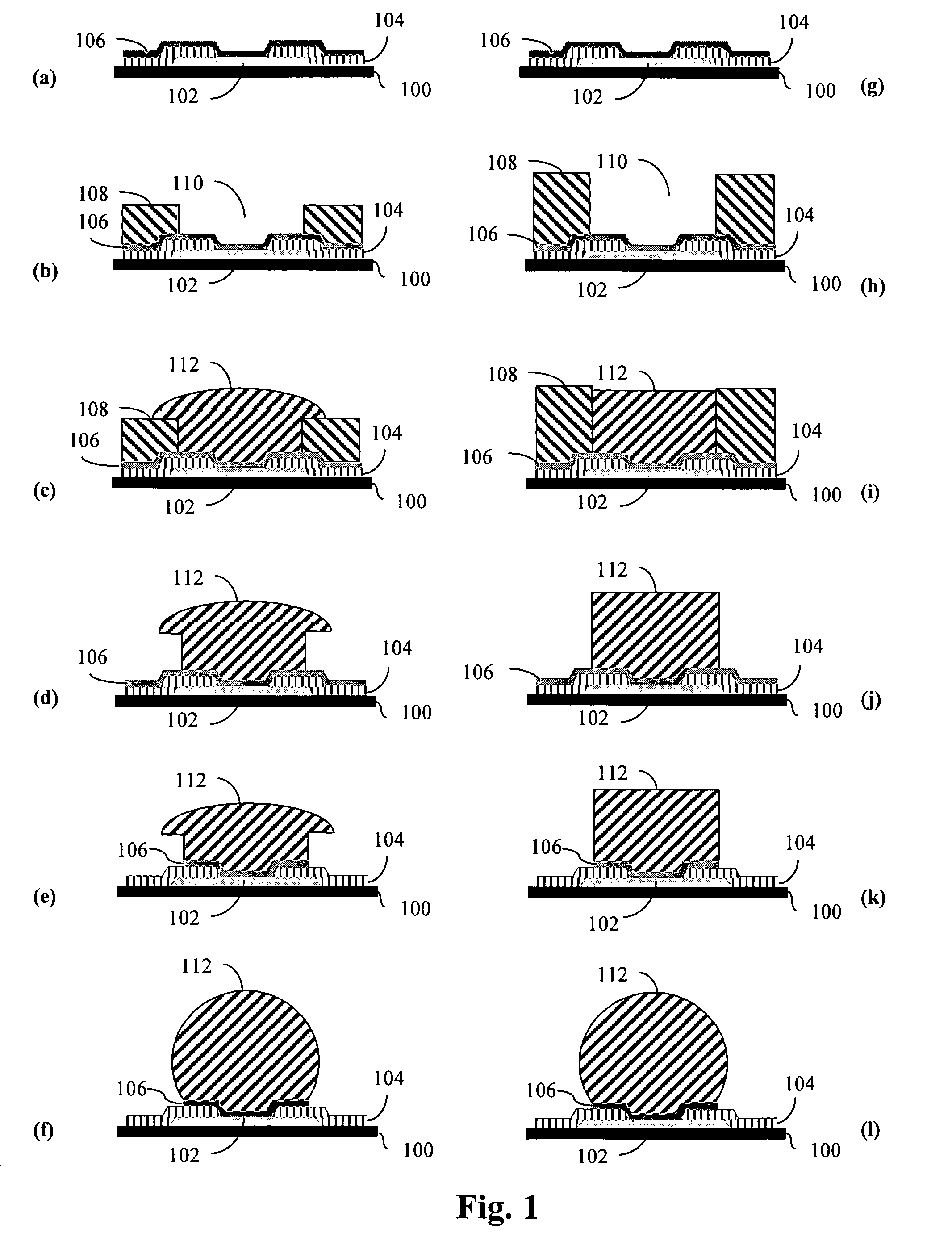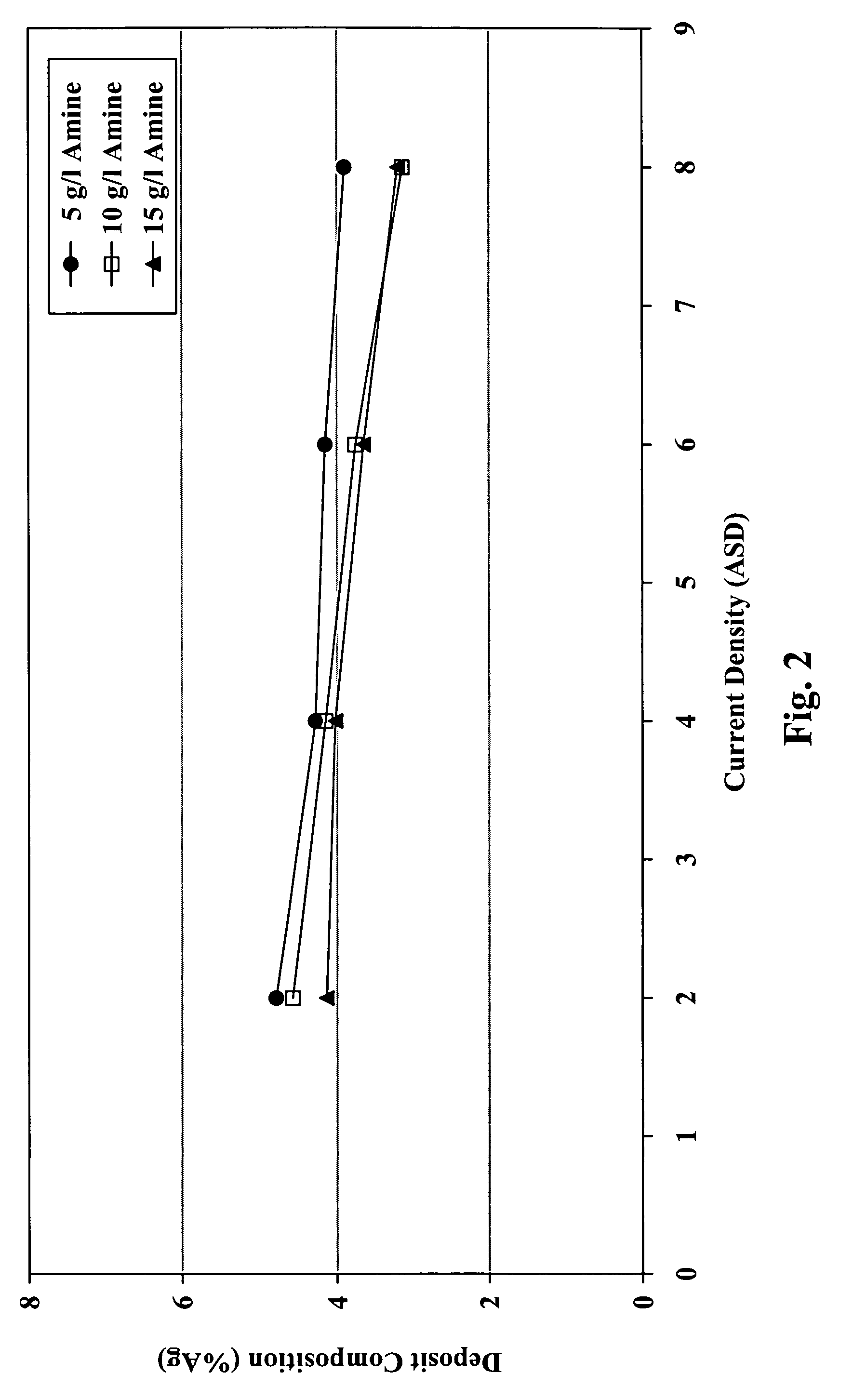Electroplating compositions and methods
a technology of electroplating composition and composition, applied in the field of metal alloys, can solve the problems of insufficient temperature resistance of the components being treated, inability to develop an electroplating process capable of imparting the desired properties, and inability to meet the requirements of the electroplating process
- Summary
- Abstract
- Description
- Claims
- Application Information
AI Technical Summary
Benefits of technology
Problems solved by technology
Method used
Image
Examples
examples 1 – 3
EXAMPLES 1–3
[0068]Electrolyte compositions were prepared by combining 60 g / L tin from tin methane sulfonate, 1.5 g / L silver from silver methane sulfonate, 50 g / L methane sulfonic acid, 15 g / L 1-allyl-2-thiourea, 1.04 g / L vanadium (IV) acetyl acetonate, tetra(2-hydroxypropyl)ethylenediamine in amounts of 5, 10 and 15 g / L, and deionized water (balance), at 30° C. Coupons of Hull steel panels were immersed in the compositions in a Hull cell and plated with a layer of tin-silver at current densities of 2, 4, 6 and 8 A / dm2. The silver concentration of the resulting layer for each of the samples was measured by XRF. The results are shown in FIG. 2, which is a graph of deposit composition versus current density. FIG. 2 demonstrates that a generally uniform composition for the tin-silver deposits can be achieved over a broad current density range.
example 16
[0085]An electrolyte composition was prepared by combining 60 g / L tin from tin methane sulfonate, 1.5 g / L silver from silver methane sulfonate, 0.5 g / L copper from copper methane sulfonate, 110 g / L methane sulfonic acid, 1 g / L vanadium (IV) acetal acetonate, 10 g / L tetra(2-hydroxypropyl)ethylenediamine, 15 g / L 1-allyl-2-thiourea, and deionized water (balance), at 25° C. A Hull steel panel was immersed in the composition in a Hull cell and plated with a layer of tin-silver-copper. The tin, copper and silver concentration of the resulting layer at locations on the steel panel corresponding to 1, 2, 4, 6, and 8 A / dm2 was measured by XRF. The results are shown in FIG. 11. As can be seen from FIG. 11, a tin-silver-copper film having good uniformity was obtained over the entire current density range tested.
example 17
[0086]An electrolyte composition was prepared by combining 60 g / L tin from tin methane sulfonate, 0.5 g / L silver from silver methane sulfonate, 0.3 g / L copper from copper methane sulfonate, 150 g / L methane sulfonic acid, 1 g / L vanadium (IV) acetyl acetonate, 5 g / L tetra(2-hydroxypropyl)ethylenediamine, 7 g / L 1-allyl-2-thiourea, and deionized water (balance), at 25° C. The composition was used to plate a tin-silver-copper layer on a rotating steel cylinder at 3 A / dm2. The tin, copper and silver concentration of the resulting layer was measured by XRF and the melting point of the deposit was determined. The composition of the deposit was 95.56 wt % tin, 3.56 wt % silver, and 0.88 wt % copper, and the melting point was 217.48° C.
PUM
| Property | Measurement | Unit |
|---|---|---|
| current density | aaaaa | aaaaa |
| current density | aaaaa | aaaaa |
| current density | aaaaa | aaaaa |
Abstract
Description
Claims
Application Information
 Login to View More
Login to View More - R&D
- Intellectual Property
- Life Sciences
- Materials
- Tech Scout
- Unparalleled Data Quality
- Higher Quality Content
- 60% Fewer Hallucinations
Browse by: Latest US Patents, China's latest patents, Technical Efficacy Thesaurus, Application Domain, Technology Topic, Popular Technical Reports.
© 2025 PatSnap. All rights reserved.Legal|Privacy policy|Modern Slavery Act Transparency Statement|Sitemap|About US| Contact US: help@patsnap.com



